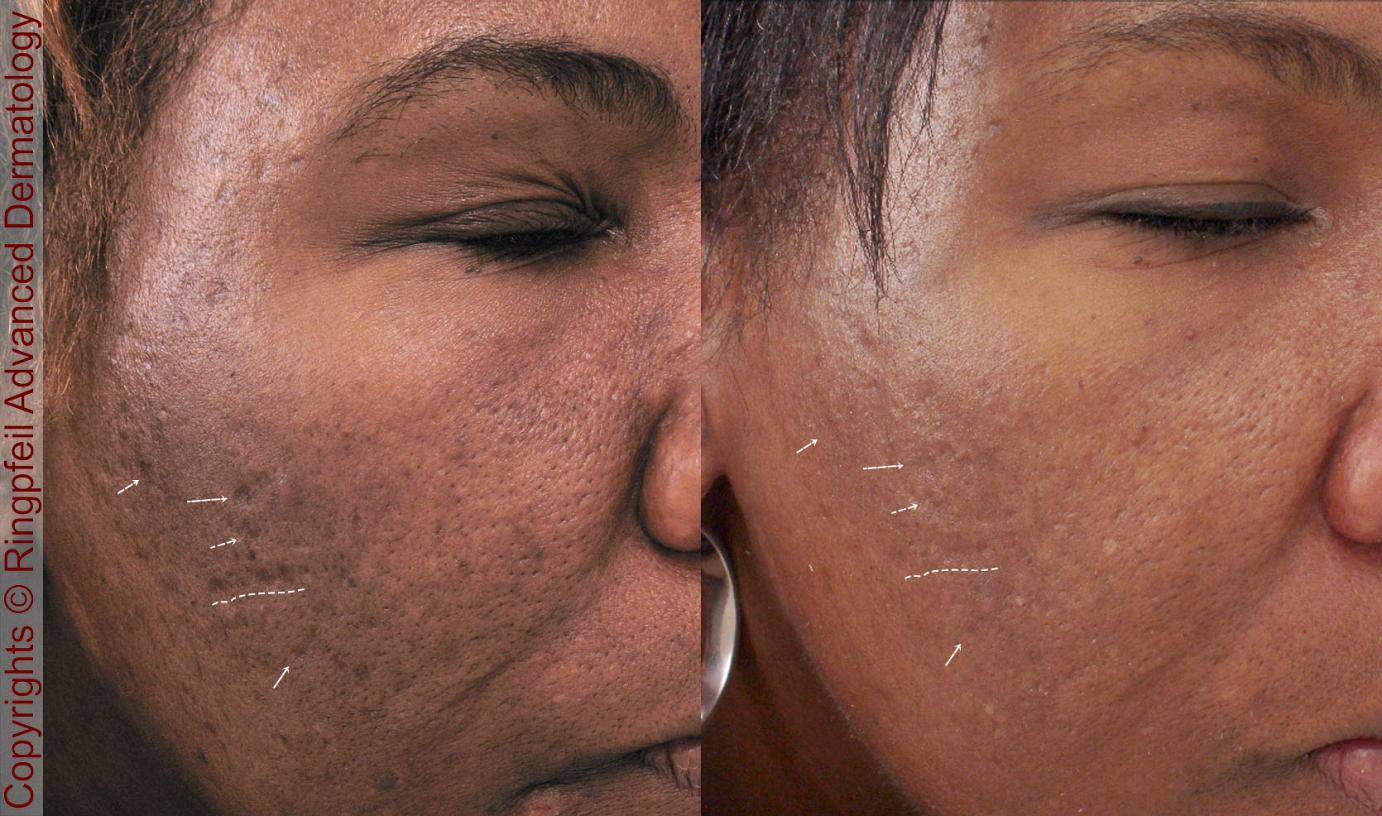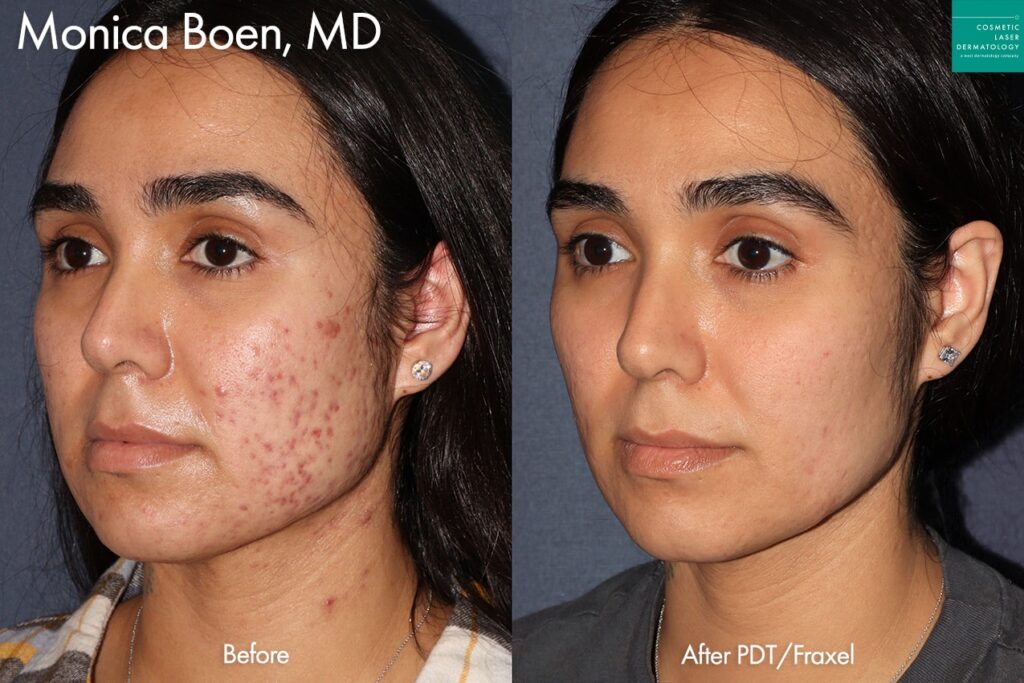Understanding the Various Skin Disease and Efficient Therapy Alternatives for Acne Marks
Acne marks stand for an intricate interaction of skin problems that dramatically influence people' self-esteem and overall skin health. Understanding the distinct kinds of acne scars-- atrophic and hypertrophic-- along with their underlying reasons, is essential for establishing reliable treatment methods. Different restorative options exist, ranging from innovative skin-related treatments to natural remedies. Nonetheless, the efficiency of these therapies often depends upon tailored evaluations by qualified professionals. As we explore the landscape of acne mark administration, it becomes noticeable that the trip toward more clear skin might include greater than simply topical options.
Kinds Of Acne Scars
The 2 primary groups of acne scars are atrophic and hypertrophic scars. These scars are additional identified right into three subtypes: ice choice marks, which are narrow and deep; boxcar scars, which are bigger and have well-defined edges; and rolling scars, which produce a wave-like look due to irregular skin texture.
On the other hand, hypertrophic scars arise from an overproduction of collagen throughout the recovery procedure, resulting in increased locations on the skin. These marks are usually firm and can vary in shade, occasionally showing up red or darker than the surrounding skin.

Sources Of Acne Scarring
Scarring takes place as an outcome of the body's natural healing feedback to inflammation and injury brought on by acne sores. When acne types, it triggers an inflammatory feedback, bring about the release of various cytokines and development elements that advertise healing. Nonetheless, this process can sometimes bring about extreme tissue development or inadequate fixing, leading to scars.
The primary sources of acne scarring include the extent of the acne itself, duration of the sores, and individual skin kinds. Severe inflammatory acne, such as cysts and nodules, is most likely to lead to scarring as a result of deeper cells damages. Furthermore, inappropriate handling of acne lesions, such as choosing or squeezing, can exacerbate cells injury and swelling, enhancing the chance of scarring.
Genetic tendency additionally plays a significant function; people with a household history of scarring go to a higher danger. Skin kind and shade can affect mark formation, as darker skin tones may experience post-inflammatory hyperpigmentation, while lighter skin may establish atrophic marks.

Therapy Choices for Scarring
Efficient therapy choices for acne scarring vary depending upon the type and seriousness of the scars. Generally categorized right into atrophic, hypertrophic, and keloid marks, these conditions require customized strategies for optimum outcomes.
For atrophic marks, which are defined by a loss of tissue, treatments such as chemical peels, microdermabrasion, and laser treatment are generally used. These techniques promote skin renewal and stimulate collagen manufacturing, therefore enhancing skin structure. Subcision, a minimally invasive treatment, can additionally work by breaking up fibrous bands under the skin.
Keloid and hypertrophic marks can be much more challenging to deal with. Choices include corticosteroid shots to minimize inflammation and flatten the marks. skin rejuvenation treatments. In many cases, cryotherapy or laser treatment might be advised to lessen their look
Surgical alternatives are available for serious scarring, where excision or skin grafting might be essential. It's vital for people to talk to a skin doctor to assess their certain mark kind and go over one of the most appropriate treatment strategy. Combining multiple therapies usually produces the finest outcomes, making sure that each client's one-of-a-kind skin disease is addressed successfully.
Home Treatments and All-natural Solutions
All-natural solutions and natural remedy can provide an obtainable strategy for individuals looking for to improve the look of acne marks. Numerous components located in the home kitchen have actually shown potential benefits in improving skin appearance and promoting healing.
One popular treatment is aloe vera, recognized for its anti-inflammatory and relaxing residential or commercial properties. Using fresh aloe vera gel straight onto the marks can help enhance skin hydration and decrease inflammation. Honey possesses natural antibacterial and moisturizing high qualities that can aid in scar healing. It can be used as a mask, left on for 30 minutes before rinsing off.
One more efficient option is lemon juice, which serves as a natural exfoliant and see page can lighten hyperpigmentation. Nevertheless, it needs to be used carefully, as it may trigger photosensitivity. Oat meal masks are additionally beneficial; their gentle peeling can assist get rid of dead skin cells while soothing irritability.
Essential oils, such as tea tree oil and lavender oil, can further sustain mark healing due to their antimicrobial residential or commercial properties. It is essential to perform a spot examination before applying any kind of solution to make sure there are no unfavorable reactions. These all-natural options can be a complementary approach in the trip to decrease acne scars.
Preventing Future Scarring
Taking on a positive strategy to skincare can dramatically decrease the risk of creating future acne scars. Among the crucial techniques is to take care of acne properly as it emerges (acne scars treatment). This includes utilizing non-comedogenic skincare products and medicines suggested by skin specialists that target acne without irritating the skin. Routine cleaning, peeling, and hydration can help keep skin health and stop blocked pores.
Furthermore, avoiding the lure to select or squeeze acne sores is important, as this can bring about inflammation and subsequent scarring. Rather, people should concentrate on applying topical therapies that promote healing and minimize swelling. Ingredients such as salicylic acid, benzoyl peroxide, and retinoids are understood for their effectiveness in taking care of acne and minimizing scars.

Last but not least, keeping a healthy diet plan rich in antioxidants and remaining moisturized supports skin regeneration. By carrying out these safety nets, individuals can substantially decrease their threat of future scarring and advertise overall skin health.
Final Thought
To useful source conclude, a comprehensive understanding of acne scars, including both hypertrophic and atrophic kinds, is crucial for effective treatment strategies. Tailored interventions, including professional treatments and natural remedy, can considerably enhance skin appearance and structure. Safety nets additionally play a critical duty in decreasing future scarring. Consultation with a dermatologist continues to be important to develop customized methods that consider individual skin kinds and scar extent, inevitably boosting the efficiency of mark why not look here administration techniques.
Acne marks represent an intricate interplay of skin problems that substantially impact people' self-esteem and total skin health and wellness. The 2 main groups of acne scars are hypertrophic and atrophic scars. These marks are further identified into 3 subtypes: ice pick marks, which are deep and narrow; boxcar marks, which are larger and have distinct edges; and rolling marks, which create a wave-like appearance due to irregular skin structure.
A thorough examination with a dermatologist can assist establish the most ideal intervention, taking right into account the person's skin type, mark extent, and overall skin wellness.
Consultation with a skin specialist continues to be important to create personalized methods that take into consideration specific skin types and scar extent, ultimately improving the effectiveness of mark monitoring techniques.